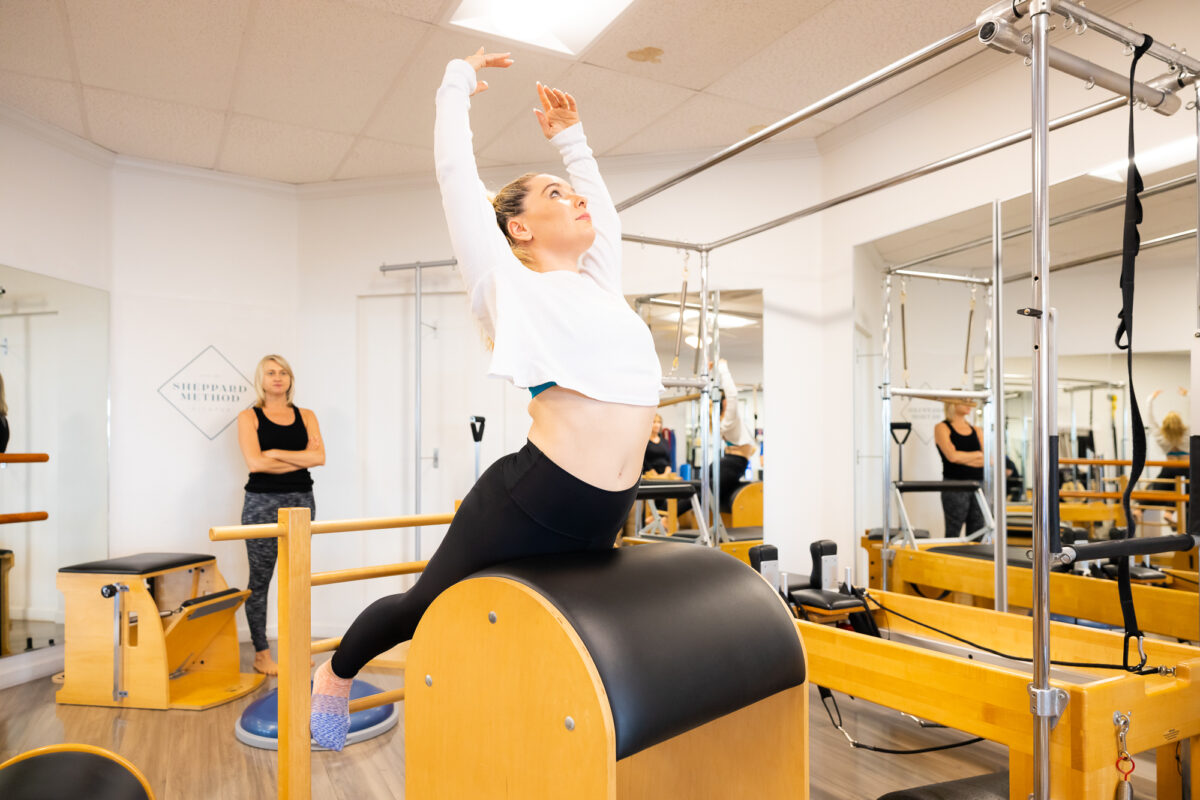Core strength is imperative when it comes to overall strength and health and the pelvic floor is considered the foundation of core strength. Your pelvic floor is made up of the muscles that support the bladder, rectum, and uterus—the internal organs of the pelvis. This muscle group is responsible for stabilizing your core, supporting your organs, sexual function, and releasing your bowels. And while most people associate pelvic floor dysfunction with women’s health, 16% of men have also been identified with pelvic floor disorder according to Mayo Clinic, making this issue important for everyone.
Luckily, studies have shown that doing Pilates regularly can improve pelvic dysfunction by strengthening the muscles of the pelvic floor and reversing symptoms and issues related to pelvic floor disorder. At Sheppard Method Pilates of Westwood, our expert instructors are well versed in Pilates for the pelvic floor and can assist you in your healing journey through a variety of class options.
Want to learn more about how to bring private Pilates classes to your home? Contact Sheppard Method Pilates in Westwood. Contact our office to get started!
What is Pelvic Floor Dysfunction?
Not everyone who experiences a weak pelvic floor is diagnosed with pelvic floor disorder, though prolonged pelvic floor disfunction can lead to more serious issues. In fact, 1 in 3 women will experience pelvic floor disorder in their lifetime. Symptoms of a weak pelvic floor usually result in issues with the bladder such as recurrent UTIs and/or leaking urine when coughing, jumping, laughing, running, or sneezing. Other indications of a weakened pelvic floor include sexual dysfunction; pain during sex; dull pelvic pain; lower back pain, and a sense of heaviness in the pelvic area.
The risk of experiencing pelvic floor dysfunction due to weakened pelvic floor muscles is heightened by:
- Aging
- Pelvic prolapse
- Hysterectomy
- Bladder surgery
- During and after menopause
- During and after pregnancy
- Fibroids, endometriosis, and other conditions
- Hormonal imbalance
- Lifting heavy things
- Obesity
- Chronic coughing
- Irritable bowel syndrome
How Pilates Strengthens the Pelvic Floor
Pelvic floor strength and control are tied to the ability to both tighten and relax the pelvic floor muscles. Consistently tense pelvic floor muscles can cause discomfort and dysfunction as much as weakened muscles.
Unlike other muscle groups, having a strong pelvic floor is not about measuring strength, but rather maintaining control over the pelvic floor muscles, since week pelvic floor muscles inhibit the ability to control your bladder, sexual organs, and bowels. Pilates is the best way to restore pelvic floor function because it’s low impact and focuses on both core strength and breathing exercises. This creates an ideal marriage of precision, control, constriction and relaxation of the muscles for PMD relief.
Pilates Exercises to Strengthen the Pelvic Floor
While all Pilates movements can help strengthen the core and pelvic floor, there are many specific Pilates movements that can target the core and pelvic floor muscles to treat pelvic floor dysfunction. These include:
- Standing marches
- Flat back hinge
- Bridge pose
- Pelvic tilts and rolls
- Cat / Cow
- Clamshell
- Birddog
- Moving frog plank
- Bear plank
- Deep squat
- Bent leg circles
- Tabletop leg lifts
Pilates for PMD in Westwood
At Sheppard Method Pilates, we can help you target your pelvic floor to strengthen the muscles necessary and restore function and control. While our beginner group classes can be a great option for general Pilates that will help improve your pelvic floor through regular Pilates exercise, we also offer private in-studio and in-home classes. This option may be optimal for specialized, targeted pelvic floor Pilates for a consistent, individualized journey of strength and health.
Contact Sheppard Method Pilates for more information about our class schedule and available instructors!

